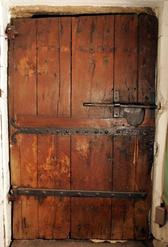Fin de Semana
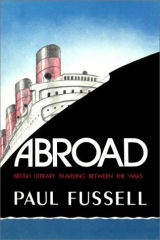 Buenos Aires – When I was departing New York back in January from my brief visit, my friend Frank handed me a few books he thought I’d enjoy. We do that. I left him one that I hadn’t. But then, that was all I had with me. I’ve been reading Abroad, by Paul Fussell, on and off since, not that it’s a long book, it’s more that it’s an odd book, and I had lots of other things going on. In the end though, it was a completely enjoyable and fascinating book. Mr. Fussell takes a look back at literary travel writing – in particular during the “golden age” of travel, between the two world wars. It’s sort of partly literary review and partly a bit of a travel book itself. I’m not going to say it’s action packed, but it definitely evokes some wonderful images of the world of travel via rail and ship and foot during that era. And if nothing else, I learned that the entire concept of passports and visas, is a very recent, 20th century invention of the British – in fact, the very first passports were issued only 91 years ago in 1915! Before then, one just sort of went where one wanted, often with little more than luggage and a little cash or a letter of credit. Think about that the next time you’re in a two hour long line at customs!
Buenos Aires – When I was departing New York back in January from my brief visit, my friend Frank handed me a few books he thought I’d enjoy. We do that. I left him one that I hadn’t. But then, that was all I had with me. I’ve been reading Abroad, by Paul Fussell, on and off since, not that it’s a long book, it’s more that it’s an odd book, and I had lots of other things going on. In the end though, it was a completely enjoyable and fascinating book. Mr. Fussell takes a look back at literary travel writing – in particular during the “golden age” of travel, between the two world wars. It’s sort of partly literary review and partly a bit of a travel book itself. I’m not going to say it’s action packed, but it definitely evokes some wonderful images of the world of travel via rail and ship and foot during that era. And if nothing else, I learned that the entire concept of passports and visas, is a very recent, 20th century invention of the British – in fact, the very first passports were issued only 91 years ago in 1915! Before then, one just sort of went where one wanted, often with little more than luggage and a little cash or a letter of credit. Think about that the next time you’re in a two hour long line at customs!
Saturday evening found us wandering our way to the Rosedal, but not to see the roses. Instead, it was to listen to, and hopefully see, Mercedes Sosa, quite possibly the most successful Argentinian singer of all time – nationally and internationally. Of course, we were not alone in heading for this gratis concert in the park, we were joined but a few thousands of other people who had the same idea. At about 7 minutes before 9:00 in the evening, a white helicopter zoomed overhead, and then swooped down and landed backstage. Sharply at 9, Ms. Sosa was on stage to a standing ovation – which was to remain the model of the concert – thousands of folk who’d come and found places to sit on the grass now stood, and remained standing, for two solid hours of music – clapping, cheering, and singing along – slowly pressing closer to the stage in hopes of glimpsing her directly. Not an easy feat, as she was seated in a grand armchair, making her a bit difficult to see – but large screens on either side of the stage kept her in view of everyone. She was joined mid-concert by Diego Torres, one of Argentina’s more recognizable young talents, and at the end of the evening, for her final three songs, by the legendary Charly Garica. No photos – it was dark out, they were using kleig lights shining out from the stage, and the best I could get was a flash photo of a few dozens of folk standing near to me.
Then we went back home and watched the re-broadcast of the concert on local television so that we could actually see and hear her!
I left my camera at home last evening when I went out to meet my friend Michael for a bite to eat. It doesn’t really matter, as the presentation of the food we ate was nothing exciting – more or less just food slapped on plates. What matters is that the food was absolutely delicious! We’d headed over to Puerto Madero, figuring that it was early on a Sunday evening, and it was our best bet for finding something open. Plus there are ample people watching opportunities. I’d heard about a Cuban restaurant that was supposed to be pretty good, if slightly pricey, and so we took a table in the window, overlooking the puerto, at El Tocororo, Av. de Justo 1050 (Dock 7). Salsa music played in the background, the one other customer in the place was pretty much finished eating and ready to go, but we ordered a couple of well-made, and quite strong mojitos and settled in with the menu. [This place has closed.]
Only a part of the menu is “authentically” Cuban, maybe a quarter. But the rest of it is definitely Cariibbean and/or Cuban influenced. We started with a plate of guacamole, a glistening, parrot green, chunky mound of absolutely fresh avocado, seasoned perfectly, and topped with an array of plantain chips for dipping. A small salad on the side added a little extra interest. We also nearly inhaled the tower of pristinely fresh shrimp ceviche, still tasting briny from the sea, dressed in a light citrus, herb, and vegetable mixture, and topped with radish sprouts. Quite happy, we continued on to a plate of ropa vieja, a huge scoop of shredded pork, stewed in a mildly spicy tomato sauce, heaped atop a large plate of white rice and a “potage” of black beans. On the other plate, masitas de puerco con moros y cristianos – cubes of pork sauteed in garlic, onion, orange juice, and spices; alongside a large hill of a black bean, rice, and chili mixture. A bottle of locally bottled, but quite good tabasco and vinegar hot sauce was brought to the table and a dash or two added just the right amount of heat. We finished off with a creamy rice pudding with a vanilla brulee top, and a cup of the most sublime vanilla custard, swirled with caramel and topped with cinnamon, that I think I’ve ever had.
Pricey? Yes. Worth it? Yes. It’s a shame that the place was so empty, and I hope it’s not that way regularly – literally while we were there only two other people came in, and they only shared a quick snack and a couple of drinks and left. The place seats probably 200 people. If this is normal for them, go before it closes!
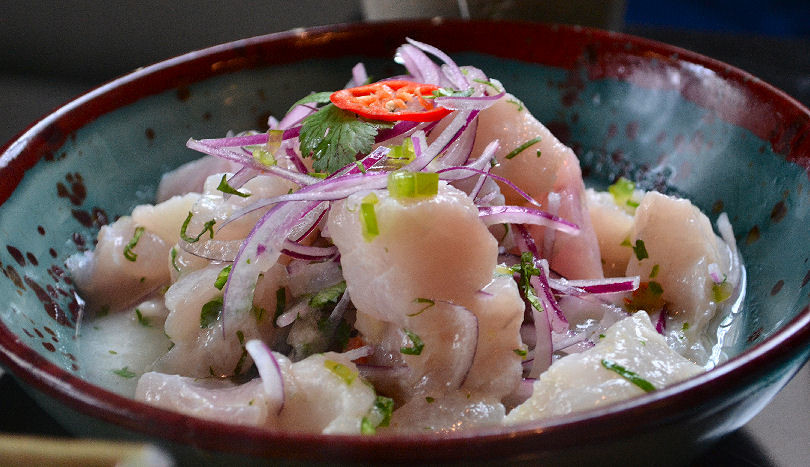


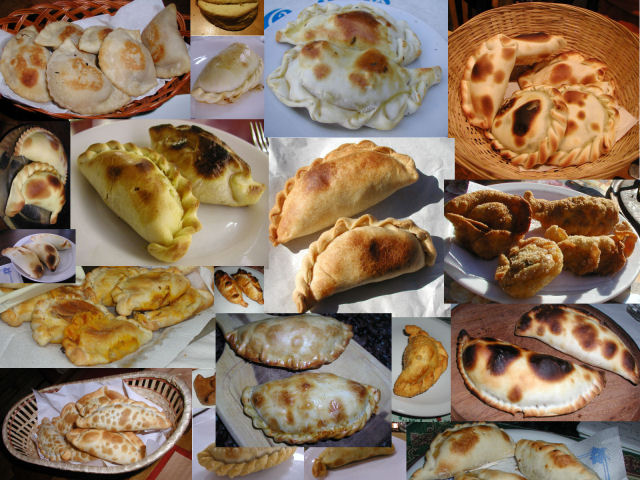
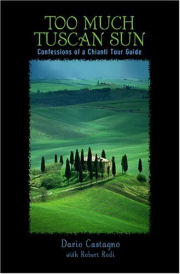 Back to the conversation, and my friend recommended that I pick up a copy of a relatively new book entitled Too Much Tuscan Sun: Confessions of a Chianti Tour Guide by Dario Catagno. So, I did, and it was my reading on the train back and forth to Lancaster over the last two days. Well, for me it was more of the same. The only difference is, it was told from the perspective of the local, talking about the tourists, rather than the other way around. But it still over-romanticizes Tuscany with long homages to grapes and olives and abandoned farmhouses and country roads, and from reading it you’d think that every local person is nothing but the most charming and interesting human to walk the face of the earth.
Back to the conversation, and my friend recommended that I pick up a copy of a relatively new book entitled Too Much Tuscan Sun: Confessions of a Chianti Tour Guide by Dario Catagno. So, I did, and it was my reading on the train back and forth to Lancaster over the last two days. Well, for me it was more of the same. The only difference is, it was told from the perspective of the local, talking about the tourists, rather than the other way around. But it still over-romanticizes Tuscany with long homages to grapes and olives and abandoned farmhouses and country roads, and from reading it you’d think that every local person is nothing but the most charming and interesting human to walk the face of the earth. 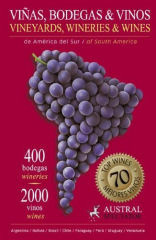 Buenos Aires – It’s pouring rain in Buenos Aires today, so plans for some outdoor activities, and probably even a visit to a museum have been backburnered. I promised weeks ago to give you a review of the new edition of Viñas, Bodegas & Vinos de América del Sur, or Vineyards, Wineries & Wines of South America. This book is an annual guide, now in its 3rd edition (2006), published by
Buenos Aires – It’s pouring rain in Buenos Aires today, so plans for some outdoor activities, and probably even a visit to a museum have been backburnered. I promised weeks ago to give you a review of the new edition of Viñas, Bodegas & Vinos de América del Sur, or Vineyards, Wineries & Wines of South America. This book is an annual guide, now in its 3rd edition (2006), published by 